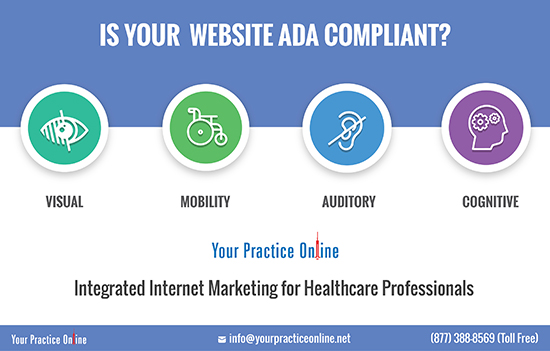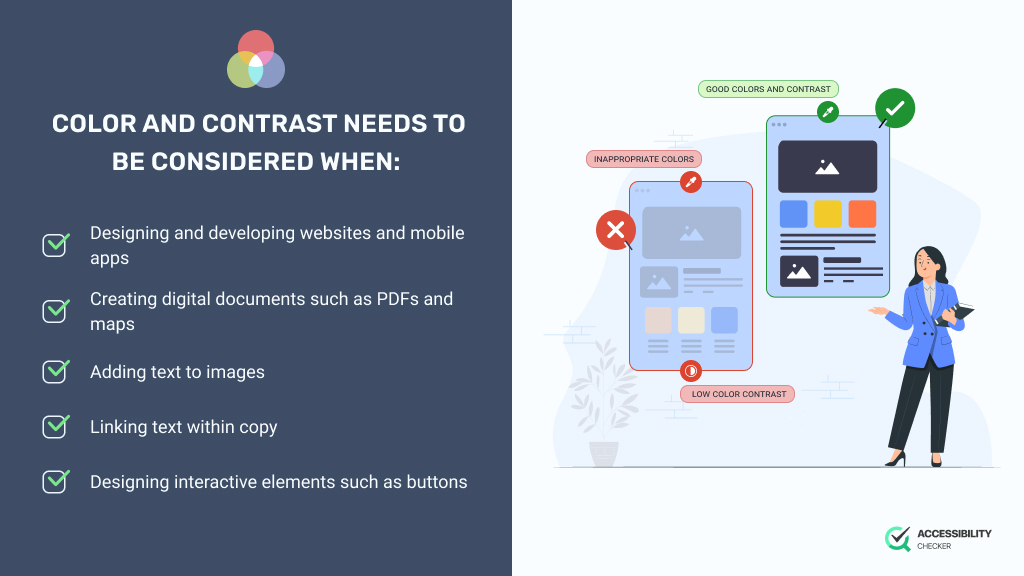Unlock the truth behind ADA website compliance: the key to ensuring inclusivity and accessibility for all online users.

Image courtesy of via DALL-E 3
Table of Contents
- Introduction to ADA Website Compliance
- Understanding Website Accessibility
- Key Features of an ADA Compliant Website
- How to Check if a Website is Compliant
- Steps to Make a Website Compliant
- Common Mistakes to Avoid
- Benefits of ADA Compliance
- Future of ADA Website Compliance
- Conclusion
- Frequently Asked Questions (FAQs)
Introduction to ADA Website Compliance
Have you ever heard of ADA website compliance? It’s all about making sure that websites are easy to use for everyone, including people with disabilities. The Americans with Disabilities Act (ADA) applies not only to physical spaces, like buildings and sidewalks, but also to the digital world of websites.
What is ADA?
The Americans with Disabilities Act, or ADA for short, is a law that helps protect the rights of people with disabilities. It ensures that they have equal access to services, like websites, so they can navigate and use them just like anyone else.
Why Websites Need to Be Compliant
Websites need to follow ADA rules to make sure that everyone, regardless of their abilities, can access the information and services they provide. When websites are compliant, they become easier to use for everyone, creating a more inclusive online environment.
Understanding Website Accessibility
In order to understand website accessibility, we need to dive into how websites can be designed to accommodate users with disabilities. Website accessibility refers to making sure that websites are usable by everyone, including people with disabilities.
What is Accessibility?
Accessibility means that a website is designed in a way that allows anyone, regardless of their abilities, to easily navigate and interact with it. This includes people with disabilities such as vision, hearing, or mobility impairments. When a website is accessible, it means that everyone can use it without facing barriers or challenges.
Different Types of Disabilities
There are different types of disabilities that can affect how people interact with websites. For example, individuals with vision disabilities may rely on screen readers to read out text on the website. Those with hearing disabilities may need captions or transcripts for videos to understand the content. People with mobility impairments may use keyboards instead of a mouse to navigate the site. Understanding these different disabilities is crucial in creating a website that is accessible to all users.
By considering the needs of users with disabilities, website designers can create websites that are inclusive and user-friendly for everyone.
Key Features of an ADA Compliant Website
Having an ADA compliant website means ensuring that all users, including those with disabilities, can access and use your site effectively. Here are some key features that make a website compliant:

Image courtesy of www.tabsite.com via Google Images
Text Alternatives
Text alternatives are essential for people who can’t see images on your website. By providing descriptive alt text for images, you are ensuring that screen readers can convey the information to users who are visually impaired.
Keyboard Navigation
Keyboard navigation is crucial for individuals who cannot use a mouse. By allowing users to navigate your site using only the keyboard, such as using the tab key to move between links and interactive elements, you are making your website more accessible to a wider audience.
Transcripts for Videos
Adding transcripts or captions to your videos is essential for users who are deaf or hard of hearing. By providing a text version of the audio content, you are ensuring that all users can access the information presented in your videos.
How to Check if a Website is Compliant
Ensuring that your website is compliant with ADA guidelines is crucial to making it accessible to all users, including those with disabilities. Here’s how you can check if your website meets the necessary compliance standards:
Automated Tools
There are several automated tools available online that can help you quickly assess your website for compliance issues. These tools scan your website and provide you with a report highlighting areas that may not meet the ADA requirements. Some popular tools include WAVE and Axe.
Manual Testing
In addition to automated tools, it is essential to conduct manual testing to ensure full compliance. Manual testing involves navigating your website as a user with different needs would. For example, try using only the keyboard to navigate your site to see if all features are accessible. This hands-on approach can help uncover issues that automated tools may miss.
Steps to Make a Website Compliant
Before making any changes, it’s important to audit your website to identify areas that need improvement. This involves checking for accessibility issues and non-compliance with ADA guidelines. By auditing your site, you can pinpoint specific areas that need attention.

Image courtesy of www.yourpracticeonline.net via Google Images
Step 2: Plan Improvements
Once you’ve identified the areas that need work, it’s time to make a plan. Prioritize the changes that need to be made and set a timeline for implementation. This will help you stay organized and focused on making your website compliant.
Step 3: Implement Changes
Now that you have a plan in place, it’s time to start making changes to your website. This may involve updating code, adding alt text to images, improving keyboard navigation, and more. Make sure to follow the ADA guidelines closely to ensure compliance.
Step 4: Test and Review
After implementing the changes, it’s essential to test your website to ensure everything is working as it should. This involves checking different elements of your site to make sure they are accessible to all users. Review the changes you’ve made and make any necessary adjustments.
Common Mistakes to Avoid
One common mistake people make when trying to make their websites ADA compliant is ignoring how users navigate the site. Navigation is crucial for all users, especially those with disabilities, as it helps them move through the website seamlessly. By overlooking navigation, you risk creating barriers that prevent certain users from accessing essential information or completing tasks on your site.
Overlooking Text Readability
Another mistake to avoid in achieving ADA compliance is overlooking text readability. Ensuring that text on your website is easy to read for everyone is essential for making the content accessible. Simple fonts, adequate font size, and proper color contrast can greatly enhance readability for users with visual impairments or reading difficulties. By neglecting text readability, you may inadvertently exclude some users from fully engaging with your website.
Benefits of ADA Compliance
Having an ADA compliant website means that it is designed to be user-friendly for everyone, including those with disabilities. Features such as text alternatives for images, keyboard navigation, and transcripts for videos make it easier for all users to access and navigate the site. This improves the overall user experience and ensures that no one is left behind.

Image courtesy of www.tabsite.com via Google Images
Legal Protection
By following ADA rules and making your website compliant, you are also protecting yourself from potential lawsuits. Ensuring that your website is accessible to all users, regardless of their abilities, is not only the right thing to do but also legally required. Compliance can help you avoid costly legal battles and maintain a positive reputation.
Increased Audience
When your website is ADA compliant, it opens up your content to a wider audience. By making your site accessible to people with disabilities, you are including a significant portion of the population who may have previously been unable to use your services or access your information. This can lead to a larger and more diverse audience engaging with your website.
Future of ADA Website Compliance
In the fast-paced world of technology, the future of ADA website compliance is constantly evolving. As new trends and technologies emerge, it is essential for website owners to stay ahead of the curve to ensure their websites are accessible to all users, including those with disabilities.
New Tools and Technologies
Advancements in technology are continuously shaping the way websites are designed and developed. In the realm of ADA compliance, new tools and technologies are being introduced to help streamline the process of making websites more accessible. From automated accessibility testing tools to AI-powered solutions, these innovations are making it easier for website owners to identify and fix accessibility issues.
The Importance of Staying Updated
Staying informed about the latest rules and regulations surrounding ADA compliance is crucial for website owners. As laws and guidelines evolve, it is important to adapt your website to ensure it remains compliant. By staying updated on new trends and technologies in the realm of ADA website compliance, you can proactively address accessibility issues and provide an inclusive user experience for all.
Conclusion
In this article, we have explored the essential concept of ADA website compliance and why it is crucial for websites to follow the Americans with Disabilities Act guidelines. We have delved into the significance of making websites accessible to all users, regardless of their disabilities.

Image courtesy of www.accessibilitychecker.org via Google Images
Recap of Key Points
We started by defining ADA and its role in supporting individuals with disabilities. Next, we discussed why websites need to be compliant, emphasizing how it improves usability for everyone. Moving on, we explored what website accessibility entails and how it aids users with various disabilities. We then outlined key features of an ADA compliant website, such as text alternatives, keyboard navigation, and transcripts for videos. Additionally, we provided guidance on how to check if a website is compliant, highlighting both automated tools and manual testing methods. We also outlined a step-by-step process to make a website ADA compliant, emphasizing the importance of auditing, planning, implementing changes, testing, and reviewing. Furthermore, we identified common mistakes to avoid, like ignoring navigation and overlooking text readability. Lastly, we discussed the benefits of ADA compliance, including better user experience, legal protection, and increased audience reach.
Final Thoughts
As we conclude, we encourage website owners to prioritize ADA website compliance not only for legal reasons but also for the positive impact it has on users. By ensuring your website is accessible to all, you are not only complying with the law but also creating a more inclusive online environment for everyone. Remember, implementing these changes not only benefits individuals with disabilities but also enhances the overall user experience of your website. Stay informed about new trends and technologies in ADA compliance to ensure your website remains accessible to a diverse audience.
Want to turn these SEO insights into real results? Seorocket is an all-in-one AI SEO solution that uses the power of AI to analyze your competition and craft high-ranking content.
Seorocket offers a suite of powerful tools, including a Keyword Researcher to find the most profitable keywords, an AI Writer to generate unique and Google-friendly content, and an Automatic Publisher to schedule and publish your content directly to your website. Plus, you’ll get real-time performance tracking so you can see exactly what’s working and make adjustments as needed.
Stop just reading about SEO – take action with Seorocket and skyrocket your search rankings today. Sign up for a free trial and see the difference Seorocket can make for your website!
Frequently Asked Questions (FAQs)
What Happens If a Website Is Not Compliant?
If a website is not compliant with the ADA rules, it may lead to legal consequences. Websites that are not accessible to people with disabilities can face lawsuits and fines. But more importantly, not being compliant means excluding a portion of the population from accessing the information and services on the site. By making your website ADA compliant, you ensure that everyone, regardless of their abilities, can use and benefit from it.
How Long Does It Take to Make a Website Compliant?
The time it takes to make a website compliant with ADA regulations varies depending on the complexity of the website and the extent of the changes needed. It can take anywhere from a few weeks to several months to implement all the necessary changes. The process usually involves auditing the website, creating a plan for improvements, implementing those changes, and testing them thoroughly. While it may require time and effort, the result of having an ADA compliant website is well worth it in terms of user accessibility and legal protection.







